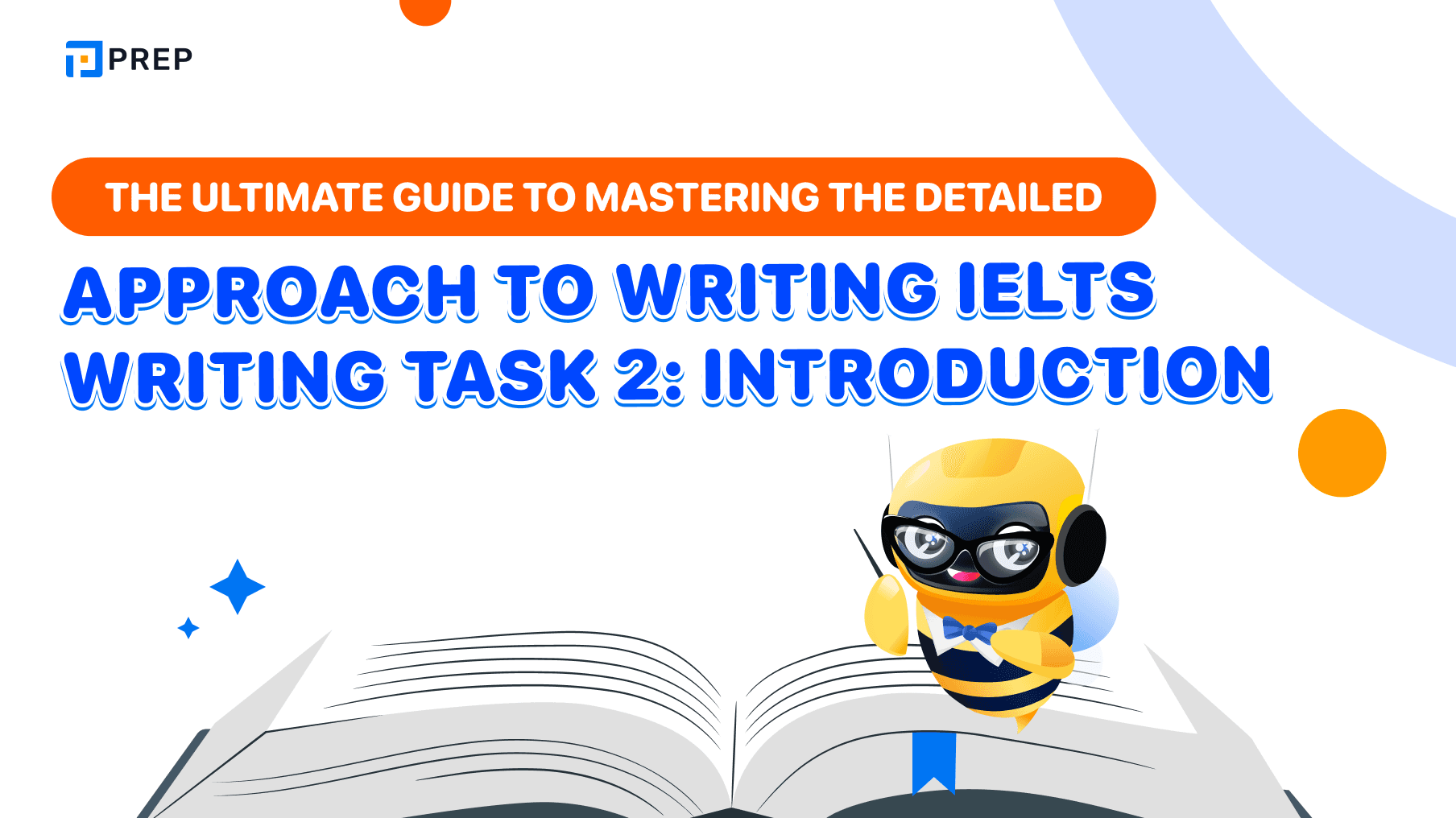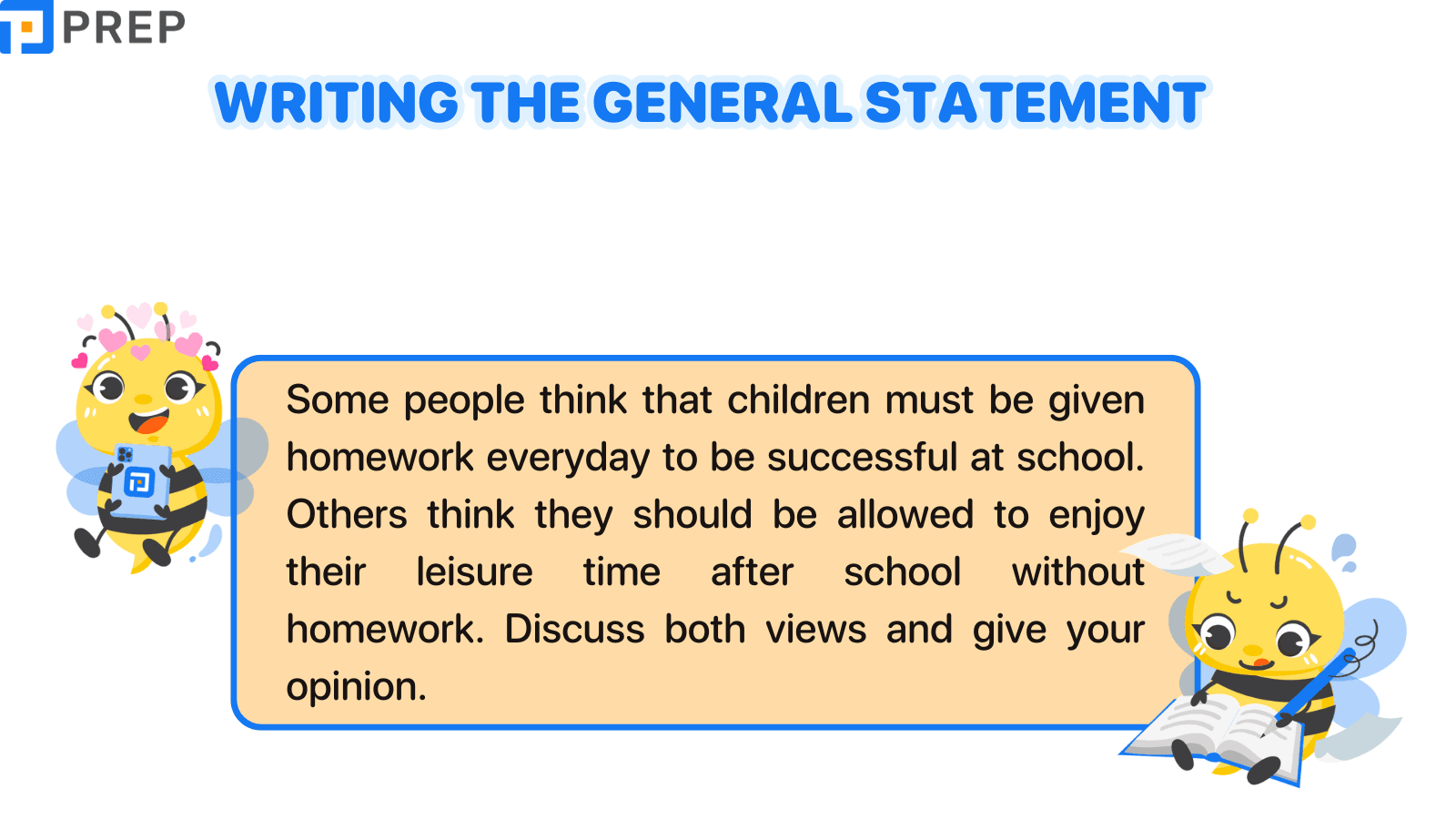The ultimate guide to mastering the detailed approach to writing IELTS Writing Task 2: Introduction
Writing a captivating IELTS Writing Task 2: Introduction is one of the topics that many IELTS test takers are interested in while preparing for the exam. How can you create an effective IELTS Task 2 introduction to impress the examiner during the actual IELTS test? Refer to the article below to fully grasp the art of writing an Introduction for Writing Task 2!

I. Structure of the IELTS Writing Task 2: Introduction
In writing the introduction for IELTS Writing Task 2, it is important to adopt a mindset of being concise and avoiding excessive elaboration and vague statements. The primary objective of the introduction is to effectively introduce the content of the essay and provide a clear direction for the reader regarding the upcoming discussion.
Firstly, it is crucial to understand the components of the introduction. The introduction in Task 2, known as the IELTS Writing Task 2: Introduction, consists of two parts: the General Statement and the Thesis Statement.
- General Statement: This introductory sentence or two serves to introduce the topic of the essay. It should provide enough context to orient the reader and establish the relevance of the chosen subject matter. However, it is important to avoid going into too much detail or introducing specific arguments at this stage. Instead, focus on providing a broad overview that sets the stage for the subsequent discussion.
- Thesis Statement: Following the general statement, the thesis statement provides a roadmap for both the writer and the reader. It succinctly outlines the main points or arguments that will be addressed in the essay, serving as a preview of the forthcoming analysis. The thesis statement should be clear, concise, and directly relevant to the essay prompt, outlining the writer's stance or position on the topic.

For further reference, please consult the following article:
II. How to Write an IELTS Writing Task 2: Introduction
1. Writing the General Statement
The topic sentence in IELTS Writing Task 2 introduces the topic of the essay. Since the essay topic is provided in the task's prompt, you can simply paraphrase it to write the General Statement.
Task: Some people think that children must be given homework everyday to be successful at school. Others think they should be allowed to enjoy their leisure time after school without homework. Discuss both views and give your opinion.

For the given prompt, which presents two contrasting views, you can use the following structure to incorporate both views into the General Statement in the IELTS Writing Task 2: Introduction:
There is an argument about whether SV
Since the prompt discusses two opposing viewpoints but generally focuses on the same subject (in this case, "young children"), this structure allows you to express both ideas in one sentence without repeating the subject. Applying this structure to the prompt, we have the following sentence:
➡ There is an argument about whether young students should be assigned homework on a daily basis or allowed to enjoy their leisure time free of extra work from school.
2. Writing the Thesis Statement
The Thesis Statement serves as a roadmap for both the writer and the reader. In this sentence, when writing the IELTS Writing Task 2: Introduction, you have two options:
Task: Some people think that children must be given homework every day to be successful at school. Others think they should be allowed to enjoy their leisure time after school without homework. Discuss both views and give your opinion.

- For prompts that ask for personal opinion (e.g., "Discuss both views and give your opinion") ➡ Express your personal standpoint. A note to consider is that we often write a contrasting sentence to indicate that we acknowledge viewpoint A but still support viewpoint B. The following sentence uses the structure "Although SV, SV" to convey this idea: ➡ Although some may advocate the latter view, I would contend that the practice of accomplishing given homework is highly beneficial to students.
- For prompts that do not ask for personal opinion (e.g., "Discuss both views") ➡ Simply outline the plan for the essay without expressing a personal opinion ➡ This essay will discuss both sides of the issues before a conclusion is drawn.
III. IELTS Made Easy: Master Every Section
Hopefully, the insights on writing an IELTS Writing Task 2: Introduction shared by PREP above will be helpful for IELTS test takers. If you need a simpler way to tackle IELTS, PREP’s lessons make mastering every section easier than ever.
👉IELTS preparation: Learn More at PREP

Hi I'm Chloe, and I am currently serving as an Product Content Administrator at Prep Education. With over five years of experience in independent online IELTS study and exam preparation, I am confident in my ability to support learners in achieving their highest possible scores.
Comment
Premium content
View allPersonalized roadmap
Most read












